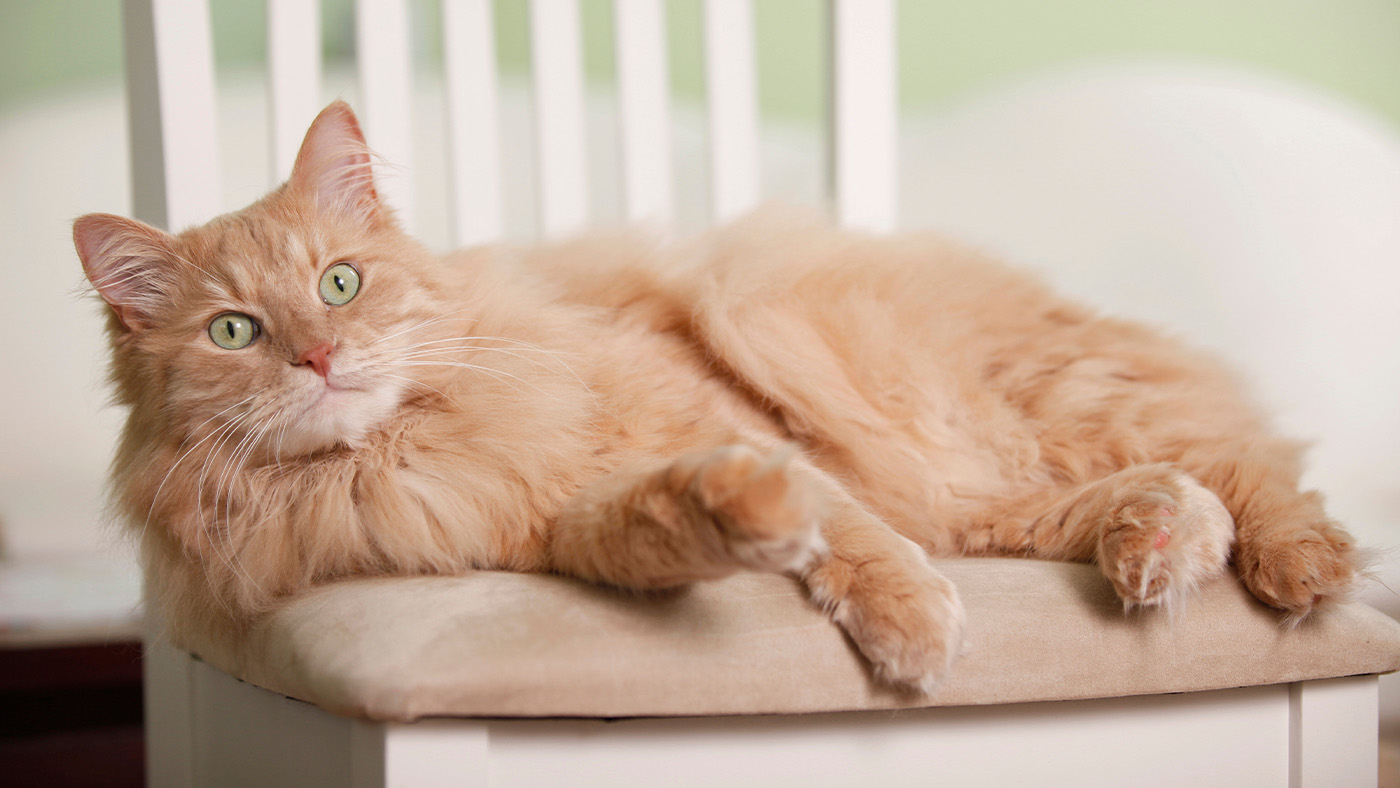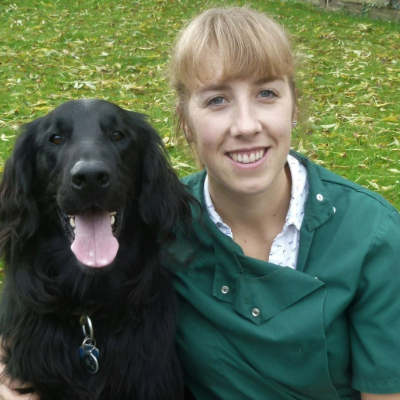Siberian Forest cats aren’t just about the neck ruffle
Triple-layered, water-loving and seriously smart – find out if a Siberian Forest cat is the perfect match for your home


Other names: Siberian cat, Moscow semi-longhair, and Russian longhair
Life expectancy: 10–18 years
Size: 10–20lbs in weight and 9–11 inches in height
Coat: brown, black, red, and white
Eye colour: green or gold
Temperament: intelligent, dog-like, playful and loyal
Origin/native country: Siberia, Russia
Friendly and affectionate, the Siberian Forest cat is best characterized by its seriously fluffy and luxurious triple-layered coat and neck ruffle, both of which help this breed retain heat in the winter (and provide you with a therapeutic pastime, as its fur is a dream to stroke!).
Believed to have been bred over thousands of years in Russia, the green or golden-eyed cat only landed in the US in the 1990s, but it wasn't until 2000 that it was registered as an official breed. Fast forward 25 years later and this quiet feline, which is one of the largest cat breeds, is among the most popular cats in the land. Wondering whether this snuggler is right for your home? Find out more here.
Are Siberian Forest cats hypoallergenic?
With its extra warm, fluffy and triple-layered coat, on the surface, it might look like a Siberian cat is an allergy-sufferer’s absolute nightmare. But a Siberian cat is a lesson in why you should never judge a book (or cat) by its cover.
Most cat allergies are caused by the allergen FeI D 1, which is found in feline saliva. When cats lick their coats, the dander and fur that is shed release this allergen into the environment, causing allergic reactions.
However, it's believed that Siberians either produce less of this protein or their saliva contains a slightly different protein, creating less of an allergic reaction in some people.
Therefore, a Siberian Forest cat is considered to be a hypoallergenic cat breed. That said, Siberians are seasonal shedders. So a potential pet owners will still need to be aware of this if they are considering bringing this breed home.
Are Siberian Forest cats friendly?
They really are! Siberian cats might have a dominating presence with their larger-than-average size, due to their three-layered coat, but their heart is warm! The Siberian is known (and loved) for its warm and friendly behaviour.
Get the best advice, tips and top tech for your beloved Pets
So much so, they are classed as one of the warmest, friendliest and most affectionate cat breeds. Siberian cats love human attention of any kind – when they’re not following you around the house to see what you’re up to, they’re most likely hoping to give you a cuddle on the couch or graze by your legs.
They’re also incredibly trusting, which helps them strike up a brilliant bond with not only most people and kids, but other animals too.
Are Siberian Forest cats good with dogs?
If you’re already the proud pet parent of a dog and you’re considering adopting a Siberian cat, you’re probably hoping they’ll get along like a house on fire.
The good news is that Siberian cats can get along with dogs, but each feline friend is different so there are no guarantees.
“To maximise the chances of success, early socialisation is recommended,” advises Dr Rebecca MacMillan. “Your Siberian cat should be introduced to dogs gradually, ideally as a young kitten, keeping interactions positive and controlled.
"Their friendly and gentle nature does make it more likely they will get along with other animals, as well as people," the vet notes.
To ensure all pet encounters go smoothly, it's worth reading up on how to make dogs and cats live together in perfect harmony.

How much exercise does a Siberian Forest cat need?
There are no surprises in guessing that these giant balls of fluff are made for the outdoors (including harsh winters).
While these large cats love a cuddle, they have a strong and muscular body. To help maintain their physique, this cat needs at least 30 minutes of exercise a day to stay happy and healthy.
The good news is that with their kitten-like and dog-like nature, this high-energy cat breed won't need too much convincing to play.
How do you groom a Siberian Forest cat?
As you might have already guessed, Siberian Forest cats require regular grooming. This is especially the case during molting seasons, like spring and fall. During this time, daily brushing would be best.
Outside of these seasons, anywhere between three times a week to weekly will help keep their long, thick and dense water-resistant coats in pristine condition.
Wisdom Panel Cat DNA Test | Amazon
Not sure exactly what breed your cat is? This kit screens for 70+ breeds, 45 genetic health insights and 25+ physical traits – because knowing every detail about your cat helps you understand how best to care for them.
Are Siberian Forest cats healthy?
Siberian cats are generally a healthy cat breed, but as with many other cat breeds, Dr MacMillan says they can suffer from hypertrophic cardiomyopathy (HCM).
“This condition causes thickening of the heart muscle, affecting its ability to pump blood around the body effectively. HCM has a hereditary component so speak to your breeder about whether they screen for it and if it is present in their breeding line.”
Cancer can also affect Siberian cats.
“A type of hereditary cancer can be found mainly in pure white Siberian cats, but thankfully, this is not very common,” the vet says.
Polycystic kidneys can be a problem for some Siberian cats, too.
“They can be born with cysts in their kidneys which gradually increase in size as the cat ages. These can end up disrupting kidney function and lead to kidney failure. Sadly, there is no cure.”
“Periodontal disease is common in cats generally, but some seem more prone to it than others. The Siberian cat is at risk from dental issues so practicing oral care from a young age is a must.”
To keep your Siberian cat healthy, you must feed them a good quality complete diet that is appropriate for their life stage. Keeping your cat at a healthy body weight will help to reduce their risk of other health issues like diabetes mellitus and degenerative joint disease.
"Make sure that you practice preventative care for your cat, such as neutering, anti-parasite treatment, vaccinations, and oral care," Dr MacMillan says. "This will help to keep your Siberian cat as healthy as possible."

How much do Siberian Forest cats cost?
All that glorious fur comes at a price!
If you’re considering bringing a Siberian cat home, you can expect to pay between $1,200 to $4,000, depending on the breeder and location you are in.
This makes these furballs one of the most expensive cat breeds. One reason given for their high price tag is that the number of purebred Siberian cats outside of Russia is very low in the US.
If you're keen on fluffy cat breeds, you could consider a ragdoll cat, which comes with a smaller price point range. Typically speaking, ragdolls can cost between $1,800 and $2,500.
Should I get a Siberian Forest cat?
Whether you bring a Siberian Forest cat home or not will depend on your preferences, lifestyle and how much time you’ve got to give.
A Siberian Forest cat will need lots of stimulation and exercise. Therefore, if you are an active person who describes themselves as 'outdoorsy' and will long to spend their days training their kitty – along with lots of snuggles thrown in for good measure – a Siberian Forest cat could be a good match.
The same could be said for anyone who suffers from allergies but still wants to share their home with a fur friend, because these cats are classed as a hypoallergenic cat breed, remember!
Plus, this larger-than-average breed gets on well with other animals, including dogs.
Therefore, a Siberian Forest cat is a friendly, active and trusting feline friend who will love spending time in its pet parent's company.
Raising A Siberian Cat | Amazon
This book can help new owners understand their Siberian better, know how to get the best results and achieve a close, positive and trusting human-cat relationship.
Read next: Facts about Siberian Forest cats and Siberian Forest cat vs Norwegian Forest cat.

Having graduated in 2009 from the Royal Veterinary College in London as a veterinary surgeon, Rebecca is highly experienced in first opinion small animal practice, having done a mixture of day-to-day routine work, on-call emergency duties and managerial roles over the years. Rebecca recently achieved a BSAVA postgraduate certificate in small animal medicine (with commendation).
Rebecca writes on various feline and canine topics, including behavior, nutrition, and health. Outside of work and writing she enjoys walking her own dog, spending time with her young family and baking!
Edited by Georgia Guerin.
This feature was last updated in June 2025.

Becks Shepherd is a lifestyle journalist who has worked with titles such as Tom's Guide, Marie Claire, and Fit and Well.
In addition to this, she’s a pet writer with nearly a decade of editorial experience across digital and print media. A devoted “dog aunt” and lifelong animal lover, Becks brings a personal touch to her pet content—whether she’s testing the latest dog gear or digging into behavioral tips.
She works closely with veterinary experts to ensure factual accuracy and is currently exploring animal care certifications to deepen her knowledge. Her work has appeared in leading outlets across health, wellness, and pet care spaces.


